Alocasia: all about care, planting and reproduction at home
Alocasia is an amazingly beautiful flower that almost every florist dreams of. It belongs to the category of tropical plants and is a fairly rare flower. Despite the presence of certain difficulties in care, this culture is able to amaze any person with its beauty.

Content
Description
This plant is a member of the aroid family. Alocasia is characterized by the presence of more than 50 species,which allows a person to choose the most appropriate option for the room. They differ among themselves in shape, size and color of foliage.
The plant is characterized by the presence of dense and thyroid oval leaves. The foliage has a pointed end and pronounced veins. The culture has long juicy petioles. In nature, the plant grows in the tropical forests of Asia.
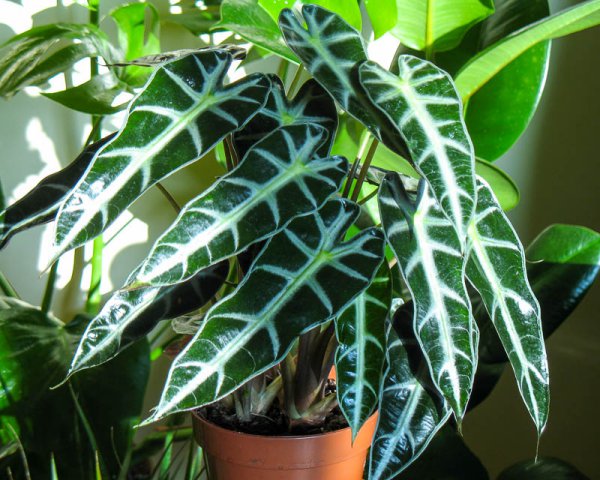
This culture has some degree of toxicity.Eliminate contact of juice on skin and mucous membranes. Keep the pot away from children and animals.
Many gardeners who met in this plant, the question arises: why is alocasia crying. Crying means the appearance of droplets. And the thing is that with excessive waterlogging of the soil, drops appear on the leaves on alocasia. The plant is often called a predictor.
Before the rain, drops appear on the foliage of the plant, which indicates the upcoming rain.

This flower is a tuberous exotic tropical plant. Only a few species can be grown indoors. Alocasia is a deciduous ornamental plant and is characterized by a rather rare flowering.
What are the varieties
Alocasia is a unique plant that has several varieties. Each of them has its own distinctive features and appearance features.
Below you can see the most popular types of alocasia with accompanying photos:
Polly
This is a hybrid of the Sandera variety. This plant is characterized by the presence of a short rhizome and can reach a height of 70 cm. The foliage has a metallic bloom. The length of the leaves can reach up to 20 cm.
Compared to other varieties of alocasia, this flower has a more frequent flowering.
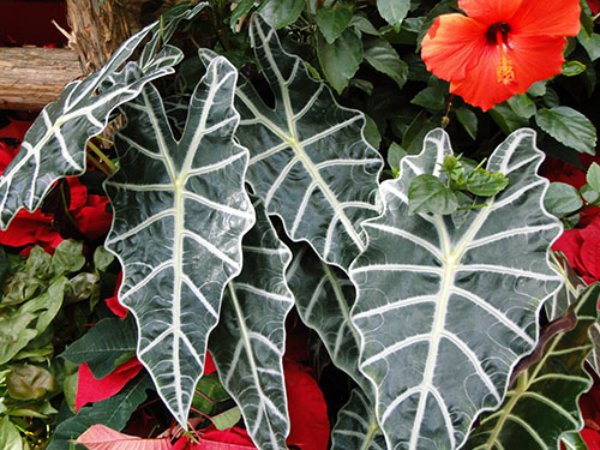
Video: home care for polly alocasia.
Sander
It is a well-known and beautiful enough hybrid. In height, the culture can reach 80 centimeters. The plant has picturesque leaves. The flower has thick massive stems.
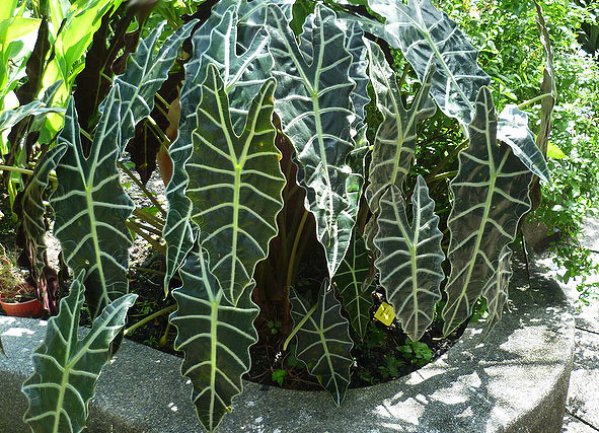
Large-root
It is characterized by the presence of oval, heart-shaped leaves. In height, the flower can reach 70 centimeters. The plant has bright red fruits.

Copper red
The flower has an original color. From the bottom, the flower has a purple color, and from the top it is copper-green. Cultivation should be carried out as carefully as possible, as it is characterized by an increased level of toxicity.
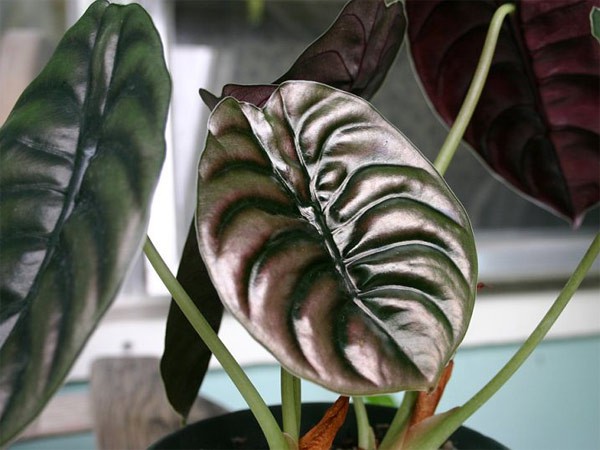
Alokazia has a large number of varieties with which you can decorate the interior of any room!
Growing conditions
In order to ensure the full growth and development of alocasia, it needs to provide appropriate growing conditions.
| Conditions | Requirements |
| Temperature | When growing a "pet in a pot" in room conditions, it is necessary to strictly adhere to the temperature regime. In winter, the flower must be provided with a temperature range of 18 to 20 degrees. In the summer, it is necessary to grow the crop at a temperature of 22 to 26 degrees. When growing a plant, it is necessary to ensure that drafts do not negatively affect it. |
| Humidity | This culture is quite demanding on moisture. In winter, it is strictly forbidden to spray the flower. In the summer, the plant is frequently sprayed. Also, it must be regularly wiped with a damp sponge. The pot is placed on wet pebbles so that it does not come into contact with water. |
| Lighting | During the period of active growth of culture, it needs to provide high-quality lighting. Further, a change in the amount and density of light can be carried out, depending on what type of alocasia is grown at home. If the plant has variegated leaves, then it needs high-quality lighting. At the same time, it is necessary to protect the culture from the negative effects of sunlight. If the color of the foliage is monochromatic, then the plant needs insufficient lighting. |
The culture belongs to the category of unpretentious plants, which greatly simplifies the process of caring for alocasia at home.
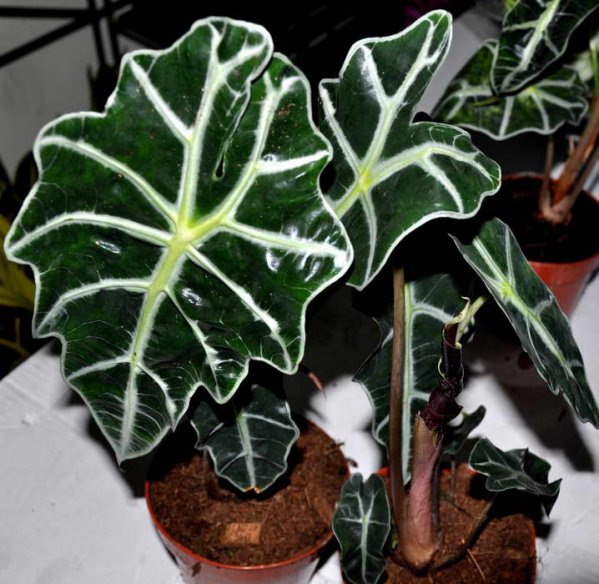
Planting and transplanting
How to transplant alocasia? For planting and transplanting alocasia, it is necessary to use nutrient soil. In order to ensure an optimal level of humidity and air circulation, it is necessary to use a soil that has a slightly acidic reaction.
Alocasia is transplanted every spring.After buying a flower, it must be transplanted into nutrient soil without fail. You can buy it at the store or prepare it yourself.
The composition of the soil for alocasia should include leaf, coniferous and peat soil, as well as sand. You can also use garden, greenhouse soil and sand.
If the plant is large enough, then the transplant is carried out by the transshipment method.
During the planting and transplanting period, it is necessary to choose the right pot for alocasia. It should be several centimeters larger in diameter than the previous one. Tall pots are best for planting alocasia. A high-quality drainage from broken bricks or granite is laid at the bottom of the pot.
Planting and transplanting alocasia is a mandatory procedure, with the help of which optimal conditions for its cultivation and care at home are provided.
Home care
Anyone can grow alocasia at home due to its unpretentious care.
How to care for alocasia flower? You just need to adhere to certain growing rules:
Watering and feeding
During the growing period of the plant, it is necessary to be very careful about its watering. Throughout the summer, the culture needs abundant watering. In this season, under no circumstances should the soil be allowed to dry out.

For irrigation, soft, settled water is used. When water appears in the pan after watering, it must be drained each time.
In the summer, you should take care of an important thing - there should be constantly moistened soil in the alocasia pot.
In winter, moderate watering is provided to the indoor plant. This action should be carried out as carefully as possible.
If there is an excess of moisture in winter, this can lead to extremely unpleasant consequences - rotting of the root system.
In the spring-summer, the flower needs regular feeding. The procedure should be performed every 2-3 weeks. Fertilizing is carried out using complex mineral fertilizers, which can be bought in specialized flower shops.
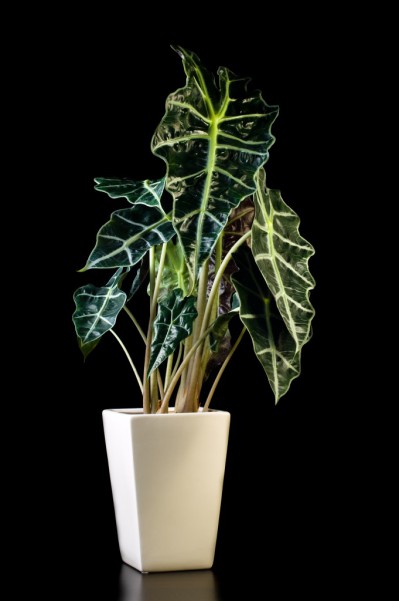
Bloom
Alocasia houseplant can bloom only after 7 years. If the flower has falling leaves, then the appearance of the peduncle is observed simultaneously with the leaf. The length of the petiole is usually slightly longer than the pedicel.
The appearance of flowers on alocasia is observed only when proper care is provided at home.
Alocasia gives a lot of energy to flowering. That is why, after the culture fades, there is a loss of its decorative effect. During this period, leaf fall is observed. Plant recovery lasts a long period.
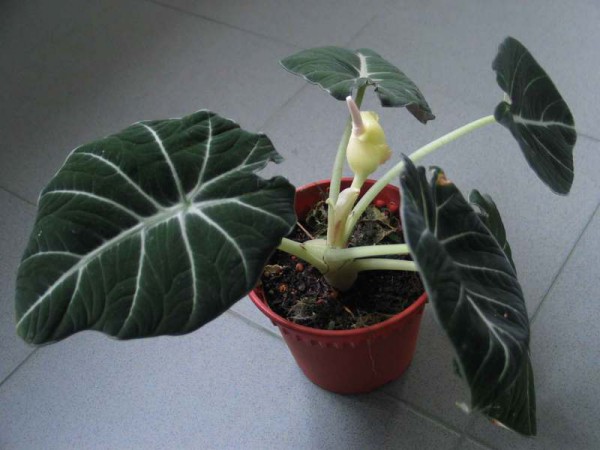
Dormant period
In order to return the decorative effect to the flower, it is necessary to properly care for it. After the culture has flowered, the pot with it is set in a cool place. In order to ensure the subsequent flowering of alocasia, it is recommended to organize a special showcase for it. It imitates the climate of the tropical continent. In order to stimulate flowering in winter, it is necessary to dry out the flower for a short time. With the help of such a trick, stimulation of alocasia to flowering will be provided.
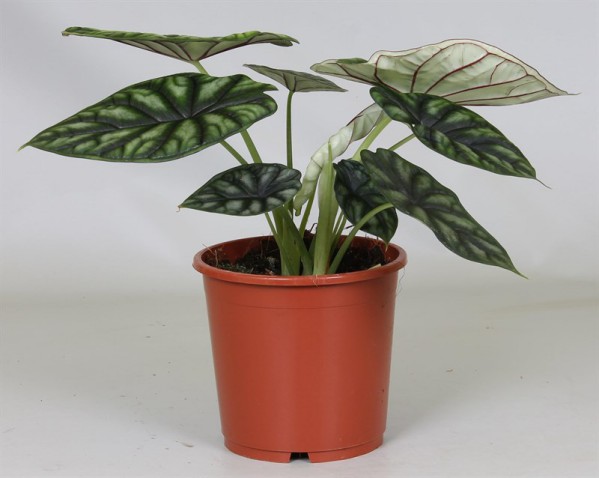
Video: home care for alocasia.
Diseases and pests
Improper care of alocasia can provoke unpleasant and varied diseases and pests. It is worth paying close attention to the flower.
If symptoms of the disease are detected in alocasia, it is necessary to provide a full and immediate treatment of the flower.
| Disease | Healing procedures |
| Root and stem rot | These diseases are the most common. They arise from bacteria and viruses. In this case, antifungal drugs are required to process the flower. |
| Late blight and fusarium | During the course of this disease, white spots appear on the leaves.After a certain time, the spread of spots on the leaves is observed. In case of untimely treatment of pathology, a change in the color of tissues is observed, as well as their softening and death. During the development of the disease, it is necessary to treat the flower with fungicides. |
| Anthracnose | The disease is characterized by the appearance of brown spots on the foliage, which have a yellow areola. In case of untimely treatment of the disease, an expansion of spots on alocasia is observed. The fight against the disease is carried out using fungicides. |
| Powdery mildew | With this disease, yellow and black spots appear on the foliage of the plant - in other words, the leaves of alocasia turn yellow and turn black. To combat disease, the culture must be properly cared for and treated with an appropriate drug. |

Of the pests on alocasia, the appearance of spider mites and aphids is most often observed. Also, scabies and mealybugs can be observed on the plant. For pest control, it is recommended to use a soap solution that is used to wipe the foliage of the plant. If the damage to the plant is strong, then actellic is used for pest control.
The cause of the appearance of various diseases on the plant is often improper care. When the first signs of the disease appear, it is imperative to treat alocasia.
Another very interesting video: the correct care for a "pet in a pot" to prevent or eliminate pathologies.
Reproduction
How does alocasia multiply? This plant can propagate in the following ways: by seeds or by division.
Seed propagation
For this purpose, seeds can be used, which are planted in a moist substrate. This method is not reliable enough, since the seeds do not always grow.
Planting seeds of alocasia should be carried out in a light soil mixture, which consists of leaf and peat soil and sand. To ensure a high level of moisture, the seed pot is covered with glass or plastic. To ensure the germination of seeds, the room temperature must be between 22 and 24 degrees.
It is also necessary to carry out regular spraying. After the appearance of the first shoots, the plants are dived and transplanted into small containers. The appearance of the first large leaves is observed after a year.

Reproduction by dividing the bush
In order to propagate alocasia, offspring, daughter tubers and stem cuttings can be used. Some growers use the method of dividing the bush to propagate alocasia.

When using cuttings or the method of dividing the bush, before planting the plant, the cut points must be treated with charcoal. Planting of plants should be carried out only in nutrient soil. Some experts recommend covering the cuttings with foil.
Video: reproduction of alocasia.
Alocasia is a fairly rare tropical plant that has an attractive appearance. In order for alocasia to grow fully and have lush leaves, it is necessary to provide full care for it at home. And she will delight anyone with her appearance!

